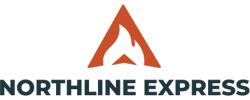Chimney Venting and Dryer Venting Help Articles
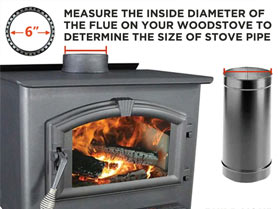
What Size of Stove Pipe do I need?
To get that answer, all you need to do is look at your wood stove and measure the inside diameter of the flue collar on the wood stove itself. If the stove has a 6” flue collar, then you should use 6” stove pipe and 6” chimney pipe through the roof. If your stove has a 8” flue collar then you run 8” stove pipe all the way up.
Read Article
How to Choose your Brand of Stove Pipe
Stove pipe is the connector pipe that attaches your wood stove to your chimney. Stove pipe cannot penetrate any combustible materials like a wall, ceiling, floor or roof and it cannot run outside your home. It also cannot be used as a liner; you can’t reline your brick or mortar chimney with stove pipe. It can only be used inside your home to connect your wood stove to your chimney.
Read Article
Single Wall vs Double Wall Stove Pipe
Whether you are putting in a brand new pipe install or replacing a existing one, you probably have questions on which type stove pipe is the best. While there are many brands out there available for your install, there are two main types of pipe that serve different purposes for your installation, they are single-wall and double-wall stove pipe.
Read Article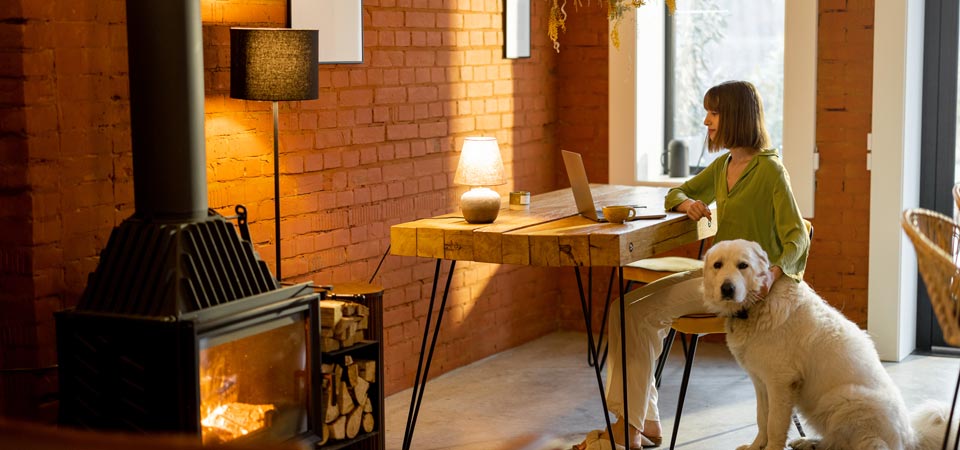
Stove Pipe Increasers and Reducers
We always recommend using the same sized Stove Pipe and Chimney Pipe for your entire install. Never use a Stove Pipe Reducer unless your appliance's manual recommends it.
Read Article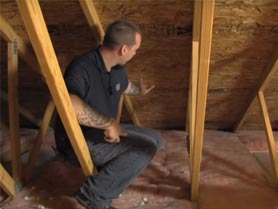
Pre Purchase Inspection for Wood Stove and Chimney Pipe Installation
Before you purchase your wood burning stove you will want to determine where you might want to place that stove and any barriers that my be in the way to hinder proper installation and venting. Our pre purchase / installation guide will help make sure that you are choosing the best location for your wood stove and venting system.
Read Article
Chimney Systems - Getting Started
Whether you are planning a new chimney installation, repairing an existing masonry chimney, or trying to educate yourself on chimney care and maintenance, knowing where to start can sometimes be the most difficult step.
Read Article
Chimney Pipe and Stove Pipe FAQs
The easiest way to start is to go to our Chimney Pipe Installation Planning Guide. We'll answer several questions here though. Start first by determining what type of chimney your appliance requires. This information is in the instruction manual of your appliance and there are several types of chimney.
Read Article
How to Measure Roof Pitch
Not quite sure what your roof pitch is? Let us help! The pitch, or slope, of a roof is expressed as the distance a roof raises vertically over a 12-inch horizontal distance. So a roof that rises 6 inches vertically for every 12 inches horizontally has a 6/12 pitch.
Read Article
Chimney Pipe - Submit a Sketch
It's easy! Pick a layout, draw out your chimney pipe or pellet vent pipe layout, give us some dimensions and answer a few simple questions, fax in your completed sketch or email it to us and one of our chimney system experts will put together a quote for you. It's that easy!
Read Article
Which Brand is Best for Me? Chimney Pipe Differences
The top rated customer pick for new chimney installations is DuraTech chimney pipe. DuraTech has a greater selection of pipe and fittings and is reasonably priced. Another popular brand among customers is Shasta Vent Chimney Pipe, which is the most affordable chimney solution. Shasta Vent is constructed from 304 Stainless Steel and a thin-fiber ceramic insulation blanket which maintains superior draft performance.
Read Article
Proper Chimney Pipe Installation Information
Proper ventilation provides greater operating efficiencies for stoves, fireplaces and inserts, as well as a home that is free of potentially harmful by-products of burning fuel products. Making sure that your home is properly vented will ensure year-round energy savings while protecting your home against moisture damage in the winter and reduce heat build up throughout the summer.
Read Article
Planning Your Installation Chimney/Stove Pipe
The following recommendations are intended as a general guideline to assist in the layout and selection of the chimney components needed for your installation. Always read and follow Installation Instructions before installing your chimney system. Follow local building codes and have your chimney inspected.
Read Article
Chimney Installation types
As the fireplace is in use and is burning fuel and other materials, the fumes and exhaust from the fire are drafted through the wall and up.
Read Article
How to Build an Attic Insulation Shield or Chase For Your Chimney Pipe
When installing a Class A chimney system, building code dictates we have at least a 2" clearance to combustibles as well as an Attic Insulation Shield. If you do not have the 15'' of space it takes to install an insulation shield...
Read Article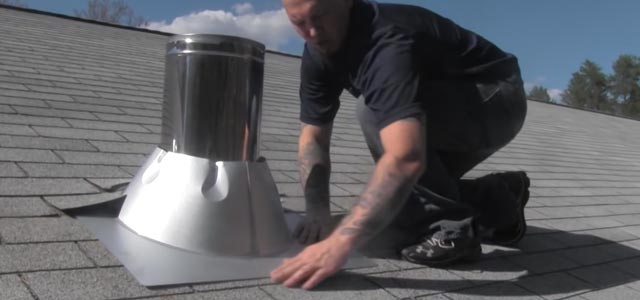
How to Install a Flashing
Even though the flashing may not be the hardest past of installing a class A chimney, it is one of the most important parts of your chimney system because it prevents rain water from seeping into the ceiling.
Read Article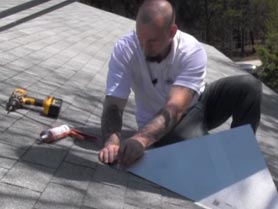
How to Install a Snowsplitter
If you live in an area that has heavy snowfalls or you have a metal roof your chimney is at risk for snow damage. Sliding snow will slam into your Class A Chimney and can, and most likely will, cause serious damage even to the point of no repair.
Read Article
How to Install a Duravent extended roof bracket
An Extended Roof Bracket is used to support the chimney when it extends more than 5' above the roof. It provides stability to the chimney against wind and snow.
Read Article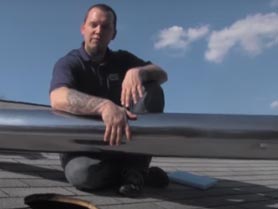
How to Install DuraTech Chimney Systems
Simpson DuraTech is an all-fuel chimney system designed for appliances that require a UL 103 or a UL HT chimney system, such as wood stoves, fireplaces, furnaces, boilers, stoves, ranges, water heaters, or other appliances fueled by wood, oil, coal, or gas, and zero clearance fireplaces that are factory-built.
Read Article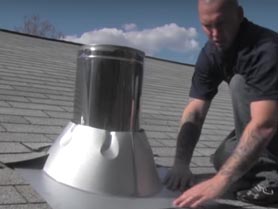
How to Install DuraPlus Chimney Systems
DuraPlus is a triple-wall, 2100° HT (high temp) all-fuel chimney system designed for appliances that require a UL 103 HT chimney system, such as wood stoves, fireplaces, furnaces, boilers, stoves, ranges, water heaters, or other appliances fueled by wood, oil, coal, or gas, and zero clearance fireplaces that are factory-built.
Read Article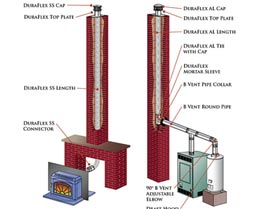
DuraFlex Flexible Pipe - Chimney Relining
DuraFlex SS (Stainless Steel) is flexible relining for masonry chimney for use with gas, wood pellet, oil, or wood burning appliances, including: fireplace inserts, furnaces, boilers, and water heaters. Ensures safe and efficient venting of heating appliances, while protecting the masonry chimney from the damaging effects of flue product condensation.
Read Article
DuraLiner Chimney Relining System
When a masonry chimney is damaged or has fallen down, it can be replaced with a safe, listed liner system or factory-built chimney. DuraLiner, when used with a Transition Anchor Plate and in combination with DuraTech, DuraPlus, or DuraPlus HTC Chimneys, replaces the damaged masonry chimney with a safe, efficient, and economical listed chimney system .
Read Article
Typical Selkirk VP Pellet Pipe Installations
VP Pellet Pipe, when installed according to Selkirk’s installation instructions, complies with National Safety Standards, such as NFPA -211. The system is rated for flue temperatures up to 570°F.
Read Article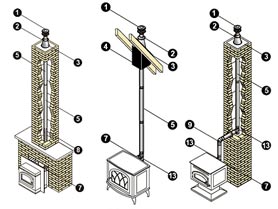
How to Install PelletVent Pro Chimney Systems
PelletVent Pro is a venting system designed for stoves and inserts that use corn, pellet, and oil fuel. (Rated for continuous use flue temperatures up to 57 degrees F.) Its double wall, air-insulated design offers superior performance.
Read Article
DirectVent Pro Common Installations
DirectVent Pro is a unitized, coaxial venting system designed for use with direct vent gas or propane stoves, heaters, and fireplaces. Stunning design and Engineered Excellence® utilizing state-of-the art manufacturing.
Read ArticleFor additional articles and help Visit our full resources directory here: Resources & Help
